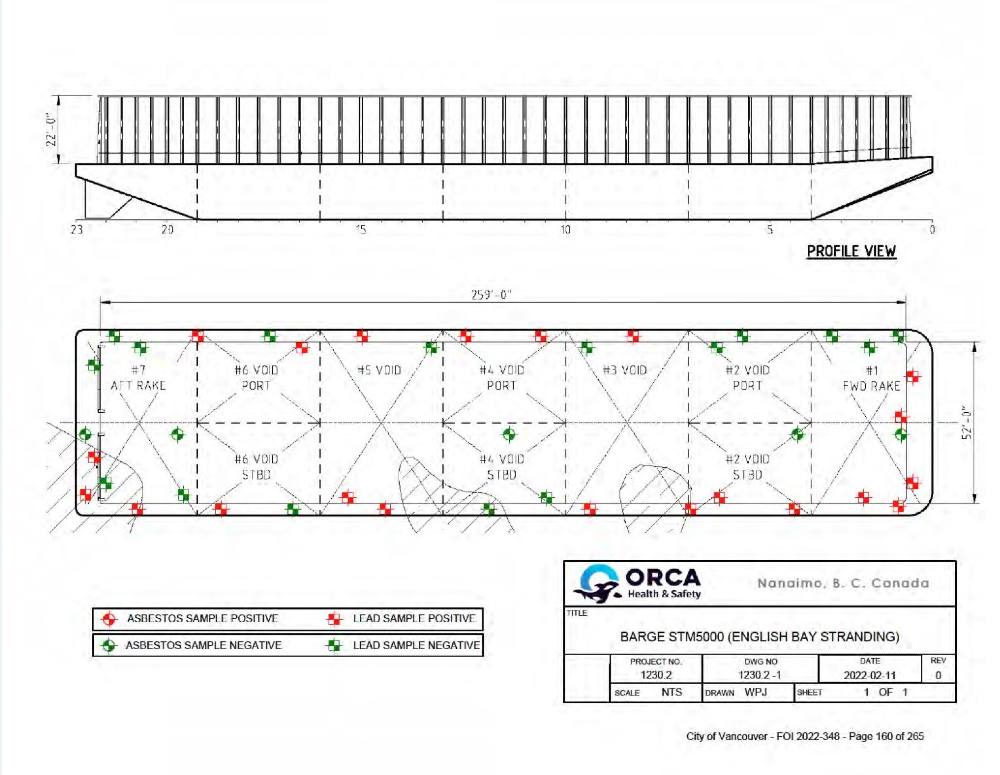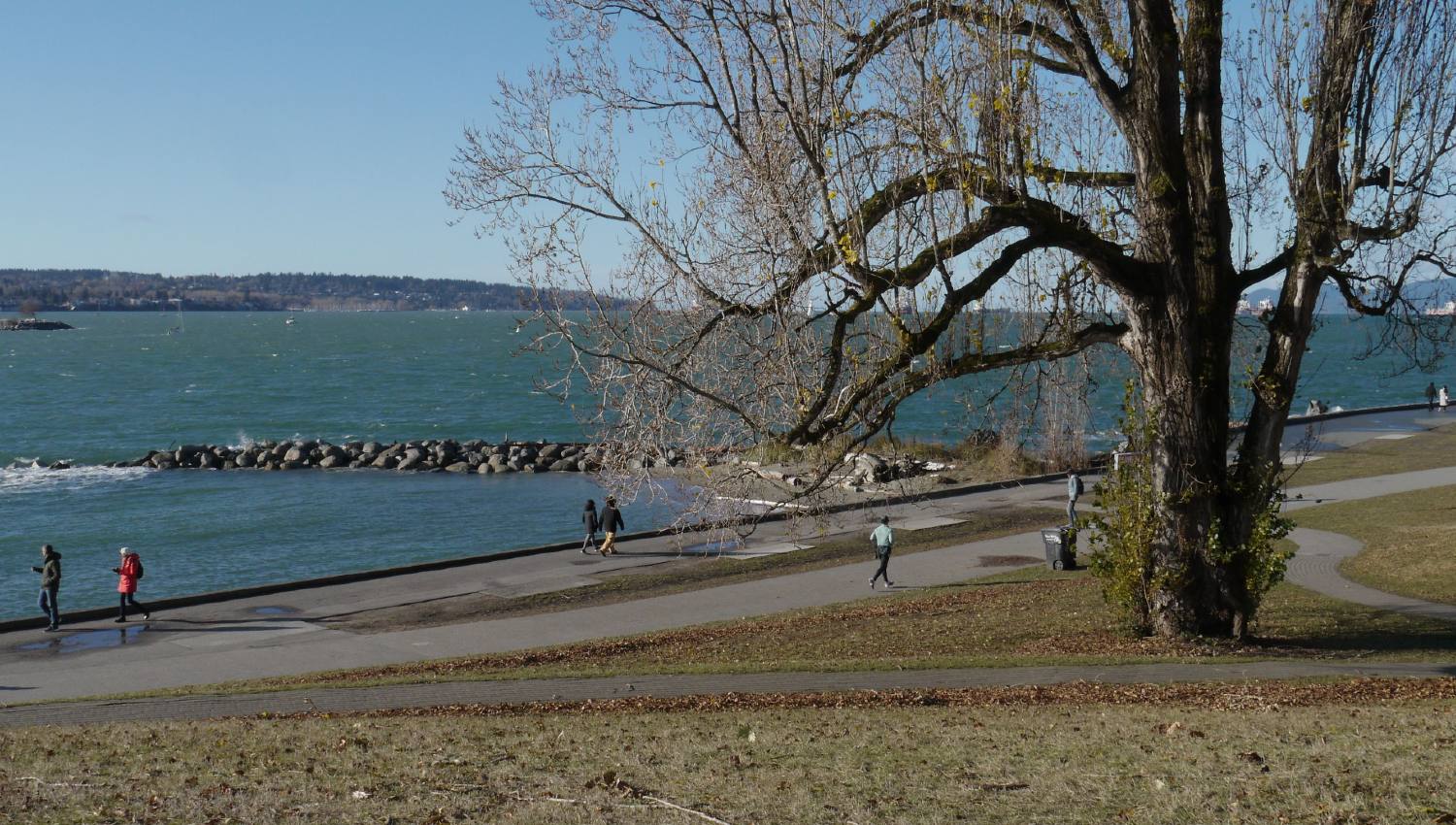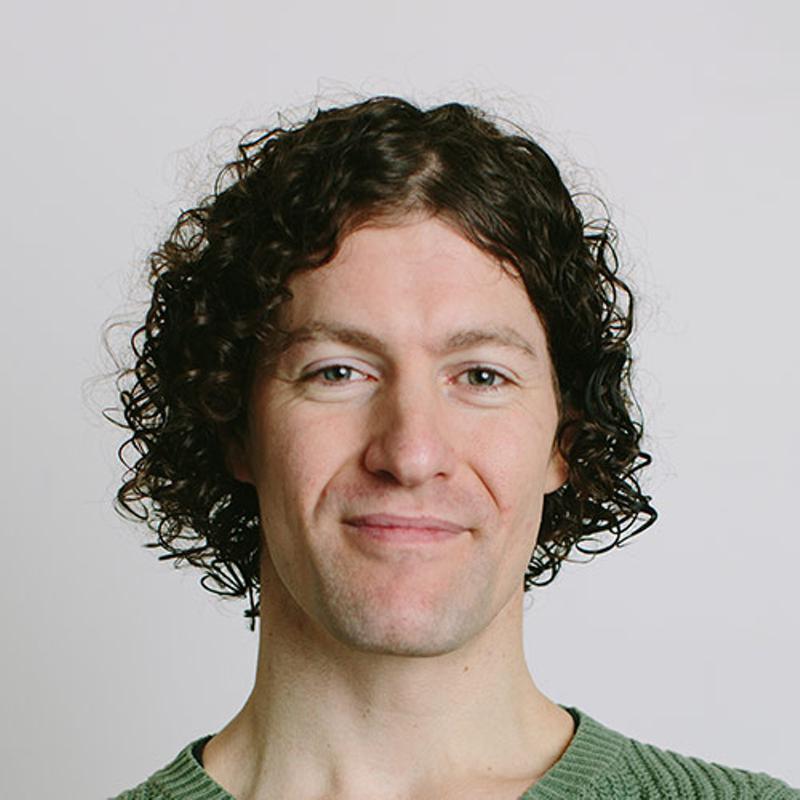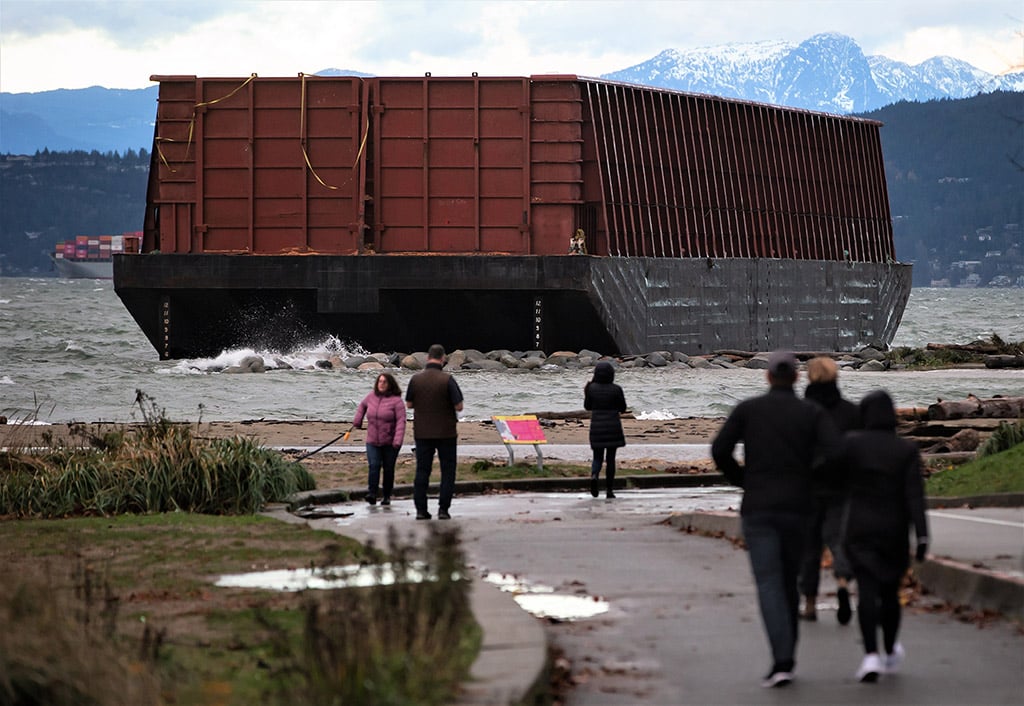It’s been a year now since a November storm beached an unmoored barge in Vancouver.
The city initially planned to “refloat” the barge that week. When that failed, plan B emerged: a contractor would dismantle the barge and remove it from Sunset Beach piece by piece. The initial timeline given to the city promised to disappear the beloved icon and menace by March 2022.
So what took so long?
The first proposal in January 2022 by Vancouver Pile Driving — the company hired by the unlucky barge owner Sentry Marine Towing’s insurance company — estimated the entire disassembly to begin in February and finish including cleanup the following month.

But the deconstruction of the barge had not yet even begun by April 2022, emails show, updating the completion goal to July 2022.
Documents obtained by The Tyee through freedom of information laws in spring 2022 are nearly completely redacted, save for a few references to trees needing pruning for access in March.
But less-redacted internal communications from the City of Vancouver between April and July shed some light on why even the updated plan was not to come to fruition.
1. Unwanted nest eggs
Emails show that environmental assessment firm Hatfield Consultants were brought in in late April 2022 to do “environmental management and regulatory support” for Vancouver Pile Driving.
Upon examining the barge site, Hatfield found a goose nest in the “forward doorway” at the centerline of the bow wall.
Hatfield notified the city that it would need to get added to the city’s existing permit for “goose addling” — the practice of sneaking off with goose eggs, aborting them if they are fertilized and stashing them back in an unsuspecting goose’s nest for population control.
Otherwise, Hatfield worried it may not be able to obtain its own permit in time to prevent goslings, which, if born, would be covered by the Migratory Birds Convention Act and would necessitate a 30-metre “no-activity” buffer until the goslings reached fledgling status.
The addling appears to have been done on time.
2. Shaking the lead out
Further assessments by Hatfield detected what might be expected of a barge originally constructed in Oregon in 1967: a whole lot of lead paint. The original heavy metal primer was found all over the barge's walls and hulls beneath other paint layers, adding to the complexity of disassembly since power tools could cause chips to land in waters and on workers.
Testing for asbestos was also conducted but turned up negative throughout the vintage watercraft.
Documents show that Vancouver Pile Driving had much trouble in April 2022 locating just who could sign off for allowing heavy machinery to pass over the underwater sewer pipes encased in cement along the seawall.

One email on April 8 shows that this issue had already dragged on enough to thwart plans to have machinery bring in fencing and water-filled barriers before a “420 event” that was likely to bring partiers and “unwanted climbers” to the beach, operations manager Ian Purvis at Vancouver Pile Driving wrote.
By April 20, it was thought fence and barrier installation could begin by May 2. But a week later, on April 26, it was still unclear who at the City of Vancouver could sign off for access.
“We have assessed the loads on the Metro Vancouver force main but we cannot determine if the loading on the pipe is acceptable without knowing Metro Vancouver's criteria,” wrote Purvis.
“I've followed up multiple times with Metro Vancouver and have not yet received a response to our inquiry. I'll try again tomorrow,” Purvis wrote.
If the barriers and fences had been installed starting May 2, the contractors believed they could start dismantling the barge on May 9. But that didn’t happen.
4. If you do not build fences, they will come
Fencing and water-filled barrier installation still appeared to be a top priority for unfinished business in email threads from the city in early June 2022. By June, however, the documentation appears to show City of Vancouver manager Harry Khella chasing Vancouver Pile Driving rather than the other way around.
An exchange between the two shows the cost estimate for the job was then estimated at $2.4 million and that deconstruction estimates, initially pegged at 10 weeks, have crept to 12 to 15.
On June 3, Khella asks for the fence installation to begin without delay.
On June 9, Khella, apparently having received no reply, asks for an update and hears that the fences won’t be installed until June 22. A week later the scheduled install date is pushed back yet further by Purvis of Vancouver Pile Driving to June 30.
On June 29, Khella raises that a “Symphony of Sunset” event taking place on July 2 nearby will be starting to install its own fencing, so Vancouver Pile Driving will need to be prompt with its fence installation. In another email, he says the sites will not overlap.
On June 30, Purvis arrives and reports that the sites do, in fact, overlap. The work area is too restricted from fencing and work will cease.

Khella makes calls to ensure access. By July 4, fence and barrier installation has begun and is scheduled to finish by 2 p.m. on July 5.
But the next email from Khella on July 6 features a link to a Vancouver Is Awesome story, “Video: Shirtless man climbs onto beached English Bay barge (yes it’s still there).”
Above the link, Khella writes, “1. Just closing the loop on this — is barrier and fencing installation complete? 2. Has the loose rope that is hanging off the barge been removed?”
After being asked for assurances for security protocols, Purvis assures on July 8 that the security guard will now remain outside for the entire shift except on break, will no longer use a car for a shelter during the day, and if using a vehicle for shelter at night he must “remain alert.”
5. Waiting to hear ‘go’ from the Sto:Lo Nation
An email chain on July 18 notes that barge disassembly can commence after the contractor receives Heritage Investigation Permits from the Sto:Lo Nation — the final nation to sign off in order to satisfy consultations with the Musqueam Nation, Tsleil-Waututh Nation and Sto:Lo Nation, as required under provincial law.
The final email uncovered via FOI reveals the permits are in place and prep work will finally begin July 25.
Since the freedom of information access request took just over three months for the city to fulfil, there are no more recent updates from internal communications.
The city confirmed Nov. 24 it had removed the final remnants of the barge, calling it a "15-week deconstruction operation." If true, that would mean it took yet a few weeks longer than the last estimate of July 25 to get deconstruction underway. ![]()
Read more: Municipal Politics, Urban Planning
















Tyee Commenting Guidelines
Comments that violate guidelines risk being deleted, and violations may result in a temporary or permanent user ban. Maintain the spirit of good conversation to stay in the discussion.
*Please note The Tyee is not a forum for spreading misinformation about COVID-19, denying its existence or minimizing its risk to public health.
Do:
Do not: